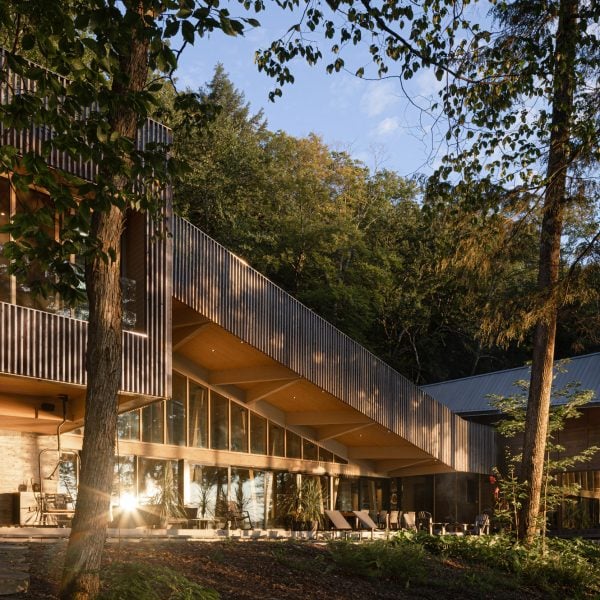Canadian architecture studio Lemay has designed a chalet prototype with a sloped roof and extensive glazing using mass timber in Potton, Quebec.
Used as an extension of founder Louis T Lemay’s personal residence, the design for the 2,500-square-foot (232-square metre) house came out of Lemay’s in-house sustainable design lab called the Phénix.
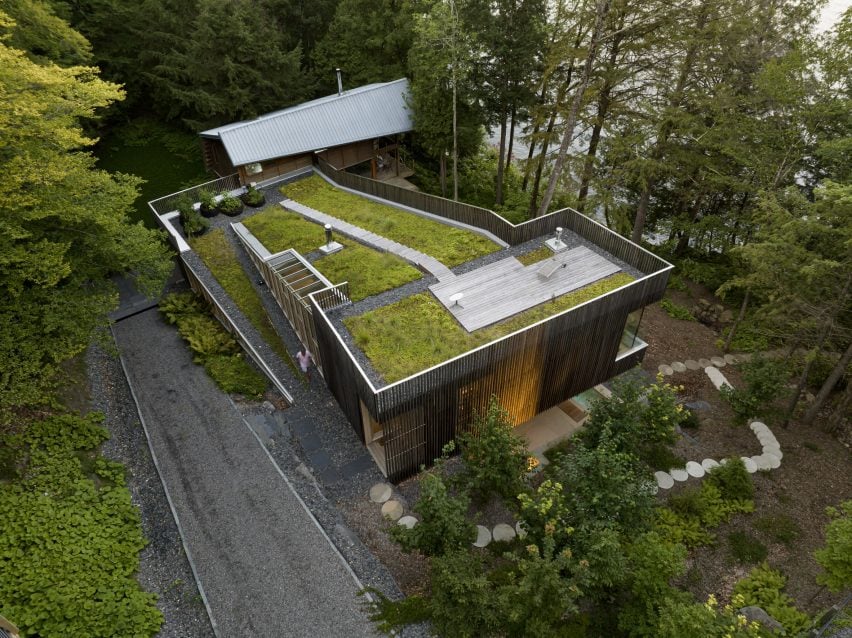
“Chalet Vale Perkins is a multigenerational, lakefront residence that’s synchronous with its environment by design,” Lemay told Dezeen. “In the spirit of experimentation, we’ve brought together Lemay’s expertise in transdisciplinary design and sustainability through our Net Positive framework to create a beautifully minimalist, four-season space inspired by surrounding landscapes and vernacular architecture.”
“It’s home, one that interconnects you with nature while having as low an impact as possible on it,” Lemay said.
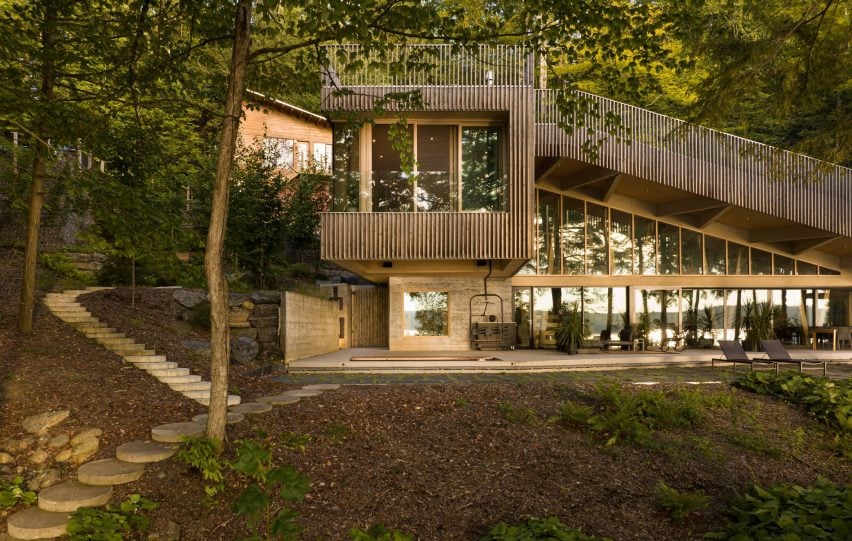
Completed in 2023, the design prioritizes user well-being through biophilia and connectivity to nature, environmental protection and climate change mitigation through carbon reduction, according to the studio.
Chalet Vale Perkins draws inspiration from the landscape and the vernacular architecture of Quebec’s Lake Memphremagog region, but leverages the area’s farmland and forestry roots with mass timber construction from the Sustainable Forestry Initiative.
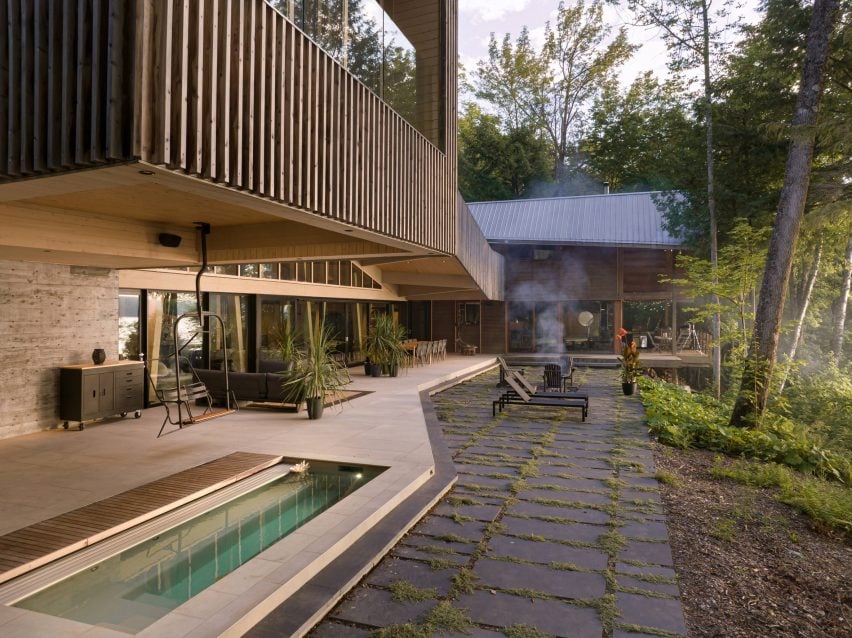
With structural engineering collaboration by ELEMA, the chalet combines concrete and eco-friendly cross-laminated timber and glued laminated timber, juxtaposing the smooth foundation with raw materiality.
The ground floor is primarily transparent with floor-to-ceiling glazing, but a screen of dark-coloured cedar slats wraps around the house and helps it blend into its alpine context.
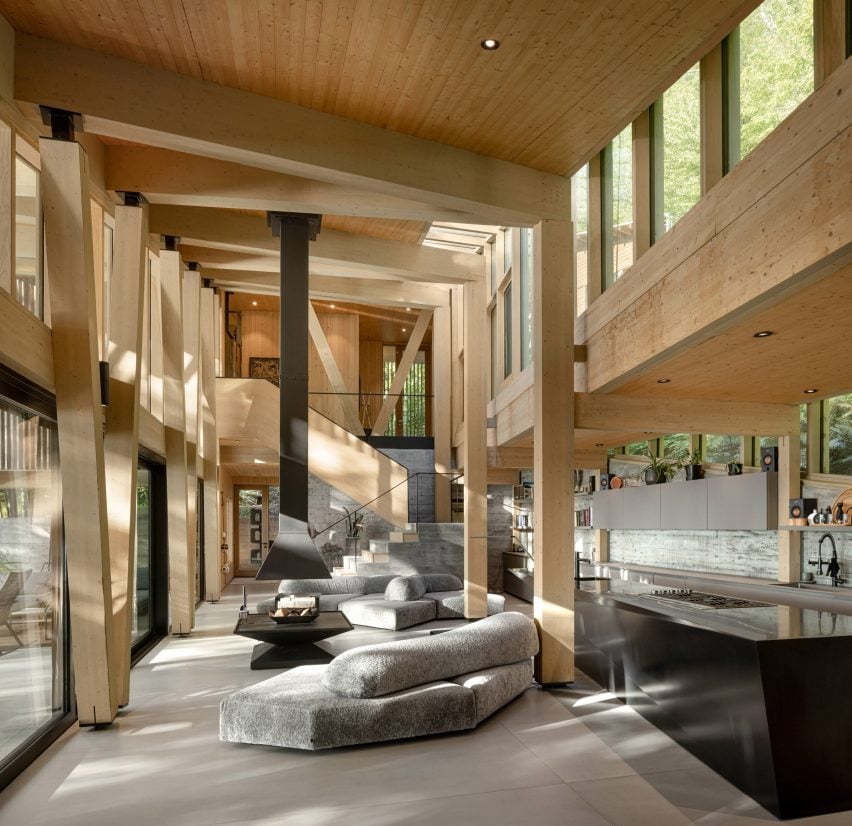
Raised on large Eastern cedar columns — custom-designed by Charpente Montmorency — the form is topped by a sloping roof that mirrors the 30-degree slope of the mountainside and a continuous green plantation roof that ramps down to the driveway.
The upstairs bedroom block cantilevers out over the slope, breaking the angular form and shading a rectangular hot tub.
The roofline extends out to form a large covered porch along the east elevation. On the other side of the expansive glazing lies a double-height family room with a sloping roof set between the large V-shaped columns.
With light coming in from all sides, the new structure is split equally between communal living and private areas, centred around a chef’s kitchen with an angular black island. A blocky concrete staircase rises to the upper level with a solid wooden railing.
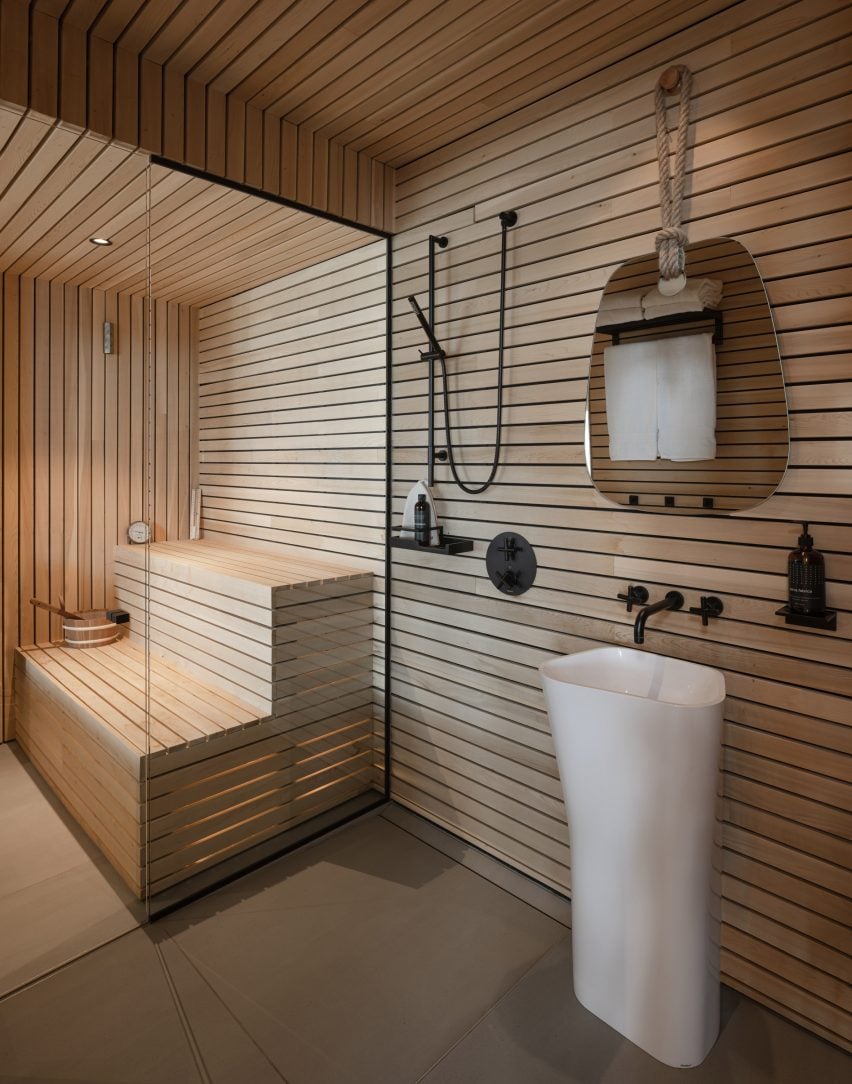
“Using natural means to control its light, temperature, ventilation, and water use, while energy costs are mitigated by photovoltaic panels, no avenue was left unexplored to avoid the use of any manmade systems,” the team said.
The house’s orientation catches sunlight through the tree canopy for warmth and daylighting, and cross ventilation and circulation eliminate the need for air-conditioning. Additionally, the concrete foundation serves as a thermal mass, keeping the home cool in the summer and warm in the winter.
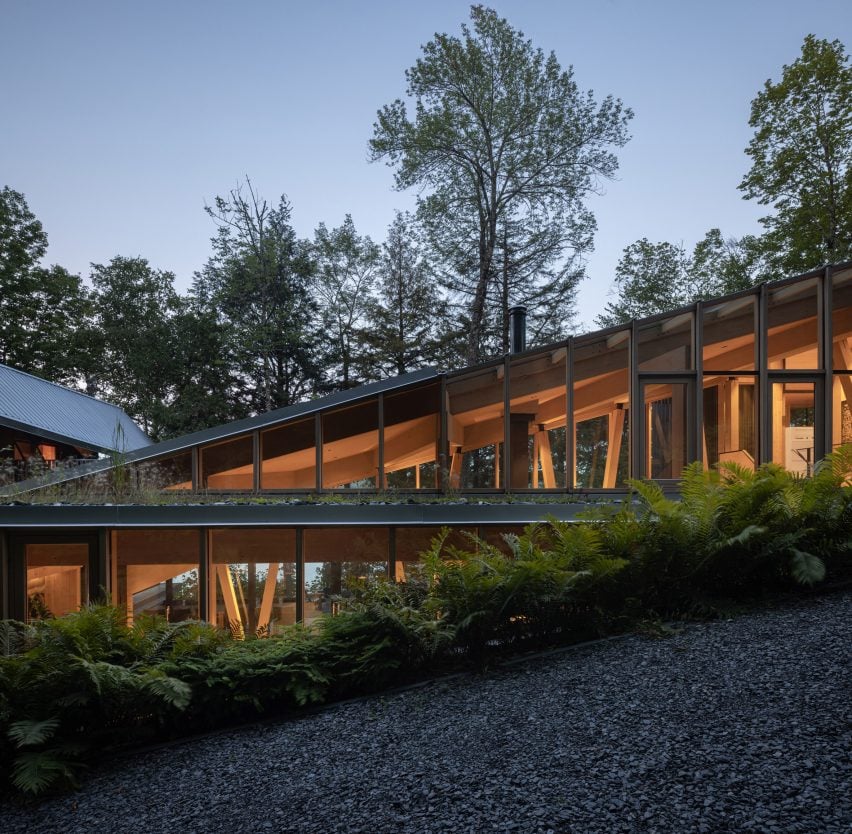
Lemay was founded in 1957 and now boasts a team of 400 designers. Recently, the studio renovated an open-air theatre in Montreal’s La Fontaine Park and completed North America’s largest indoor skating facility in Quebec City.
The photography is by Stéphane Groleau.
Project credits:
Client: Louis T Lemay
Lead architect: Louis T Lemay
Architecture: Lemay
Landscape Architecture: Lemay
Sustainable Strategies: Lemay
Structural & Civil Engineering: ELEMA
Mechanical & Electrical Engineering: ELEMA

